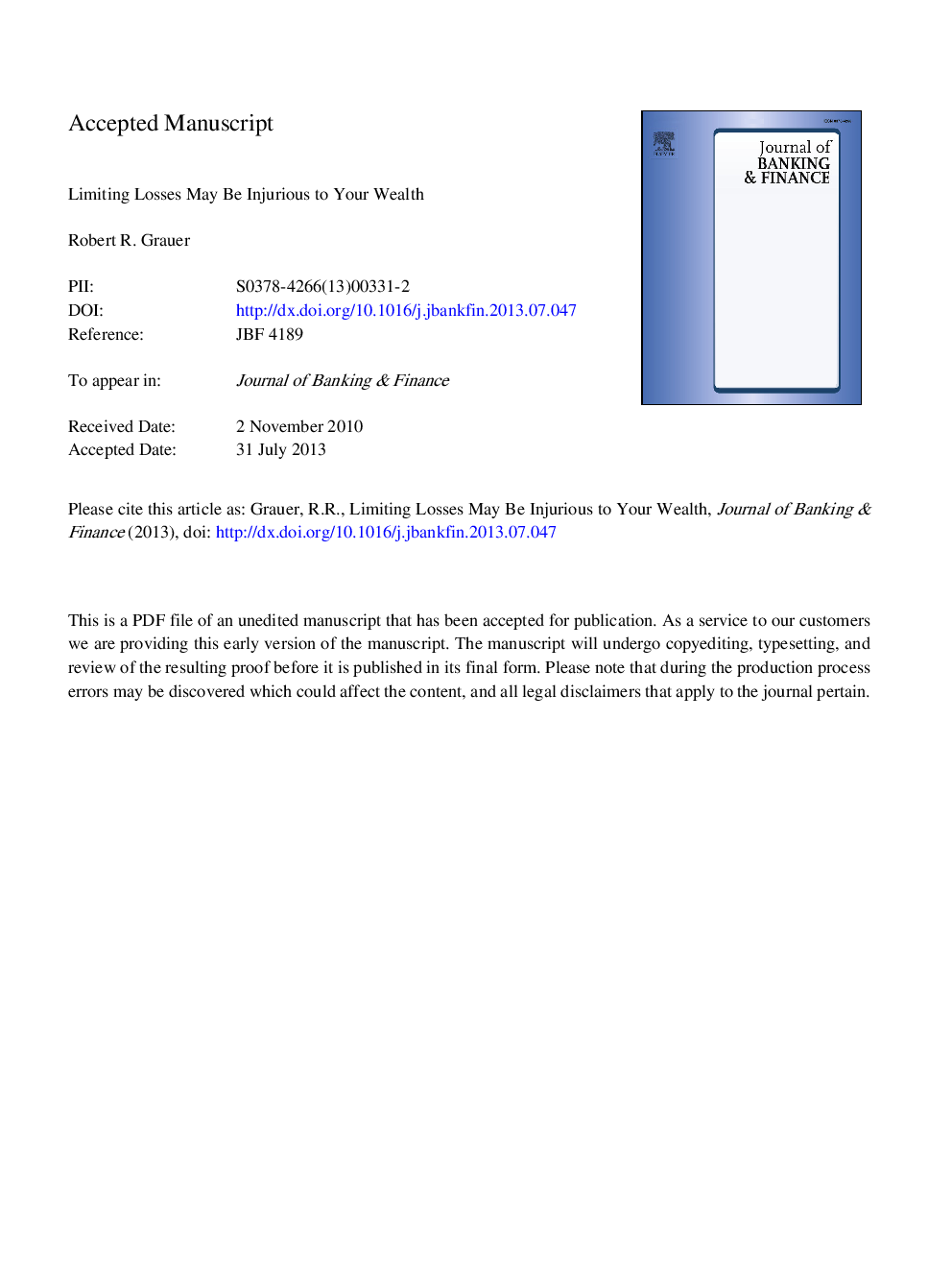| Article ID | Journal | Published Year | Pages | File Type |
|---|---|---|---|---|
| 5089347 | Journal of Banking & Finance | 2013 | 45 Pages |
Abstract
Theory tells us that if return distributions are independent over time, an expected utility maximizing logarithmic-utility investor will almost surely accumulate the most long-run wealth. This paper examines the robustness of the result. Specifically, it examines the expected and unexpected long-run and short-run consequences of imposing Value at Risk and other loss constraints on power-utility investors with a numerical example and empirically in an asset-allocation setting covering the 1934-2008 period. In addition, it examines the expected and unexpected long-run consequences of imposing Conditional Value at Risk constraints on power-utility and prospect-theory (kinked linear-utility) investors.
Related Topics
Social Sciences and Humanities
Economics, Econometrics and Finance
Economics and Econometrics
Authors
Robert R. Grauer,
